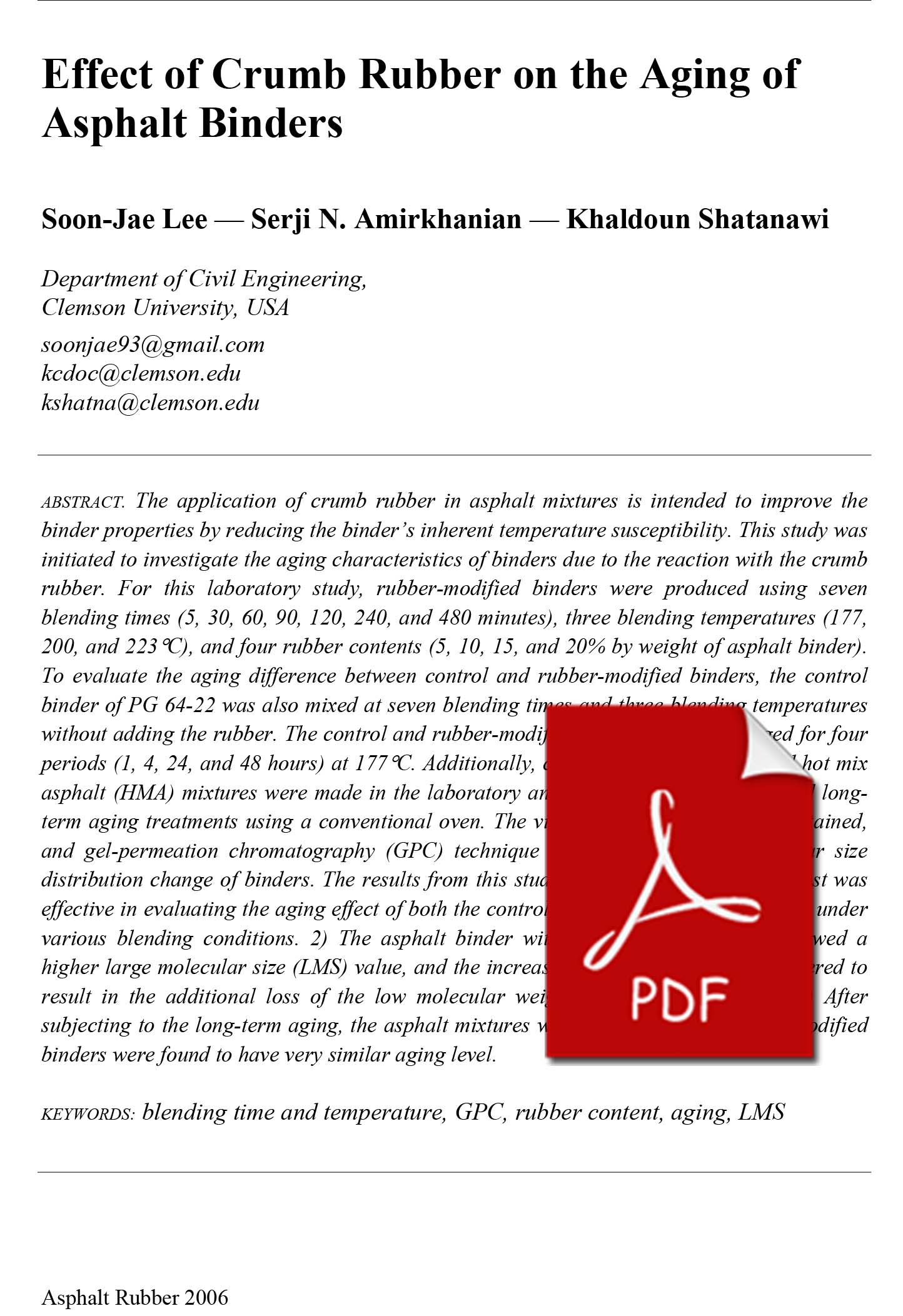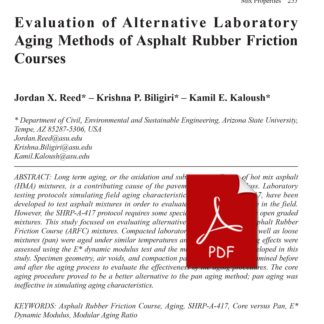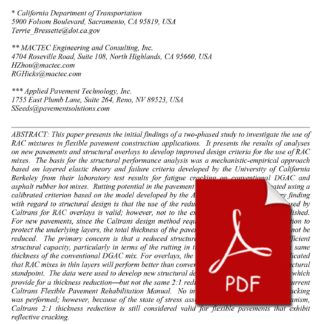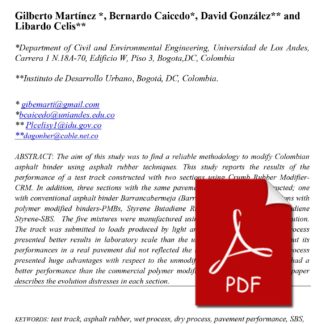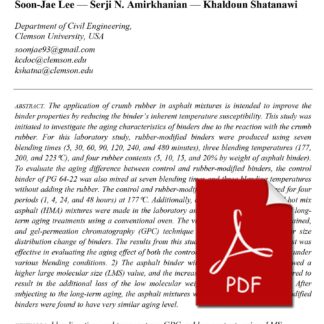Description
The application of crumb rubber in asphalt mixtures is intended to improve the binder properties by reducing the binder’s inherent temperature susceptibility. This study was initiated to investigate the aging characteristics of binders due to the reaction with the crumb rubber. For this laboratory study, rubber-modified binders were produced using seven blending times (5, 30, 60, 90, 120, 240, and 480 minutes), three blending temperatures (177,
200, and 223°C), and four rubber contents (5, 10, 15, and 20% by weight of asphalt binder). To evaluate the aging difference between control and rubber-modified binders, the control binder of PG 64-22 was also mixed at seven blending times and three blending temperatures without adding the rubber. The control and rubber-modified binders were oven-aged for four periods (1, 4, 24, and 48 hours) at 177°C. Additionally, control and rubber-modified hot mix asphalt (HMA) mixtures were made in the laboratory and subjected to short-term and longterm
aging treatments using a conventional oven. The viscosity of all binders was obtained, and gel-permeation chromatography (GPC) technique was used to detect molecular size distribution change of binders. The results from this study showed that 1) The GPC test was effective in evaluating the aging effect of both the control and rubber-modified binders under various blending conditions. 2) The asphalt binder with higher rubber content showed a
higher large molecular size (LMS) value, and the increase in rubber content is considered to result in the additional loss of the low molecular weight in the asphalt binder. 3) After subjecting to the long-term aging, the asphalt mixtures with the control and rubber-modified binders were found to have very similar aging level.

